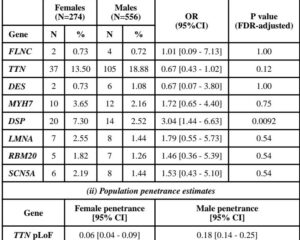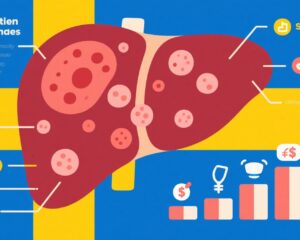Introduction and Context
Hypertension, also known as high blood pressure, is a pervasive condition affecting nearly half of the adult population in the United States and a significant contributor to cardiovascular disease (CVD), stroke, and renal failure. As our understanding of hypertension evolves, healthcare professionals must remain current with the latest guidelines to effectively manage this condition and optimize patient outcomes. This recent update to the hypertension management guidelines reflects new evidence and evolving best practices in the field.
The updated guidelines, released by the American College of Cardiology (ACC) and the American Heart Association (AHA), are an essential resource designed to assist clinicians in nurturing an evidence-based approach toward hypertension management. In an era marked by increasing awareness of the long-term impacts of hypertension, these guidelines aim to address existing clinical gaps, highlight novel therapies, and emphasize the importance of individualized patient care.
New Guideline Highlights
Some of the major recommendations and themes from the updated guidelines include:
– **Emphasis on Individualized Treatment Plans**: Treatment should be tailored based on the patient’s overall health, specific risks, and personal preferences.
– **Revised Blood Pressure Targets**: A fresh analysis of clinical trials suggests more nuanced targets for different populations rather than a one-size-fits-all approach.
– **Integration of Lifestyle Modifications**: Lifestyle changes play a pivotal role in managing hypertension, and these interventions have been enhanced in the new recommendations as fundamental to any treatment plan.
– **Updated Pharmacotherapy Strategies**: Insight into new medications and treatment mechanisms has been incorporated, encouraging clinicians to remain open to innovative therapies while considering patient-specific factors.
Key takeaways for clinicians include a renewed focus on patient engagement through shared decision-making and understanding the implications of hypertension for various demographics.
Updated Recommendations and Key Changes
The updated recommendations significantly modify previous guidelines, reflecting the latest research evidence:
| Previous Guidelines | Updated Guidelines |
|—————————–|————————————–|
| Target systolic BP <140 mmHg | Target systolic BP <130 mmHg for high-risk patients |
| Treat stage 1 hypertension in low-risk patients with a single agent | Emphasize frequent monitoring and lifestyle approaches first for low-risk patients |
| No specific recommendations for older adults | Individualized assessment and treatment targets for those over 65 based on comprehensive geriatric evaluation |
The evidence driving these updates includes findings from large-scale clinical trials like SPRINT (Systolic Blood Pressure Intervention Trial), which demonstrated the benefits of lower systolic blood pressure targets.
Topic-by-Topic Recommendations
**Diagnostic Criteria**:
– **Diagnosis of Hypertension**: Blood pressure measurements should be conducted on multiple occasions; average values should rise to over 130/80 mmHg for a diagnosis of hypertension.
**Risk Stratification**:
– **Assessing Cardiovascular Risk**: Use the ASCVD (Atherosclerotic Cardiovascular Disease) risk calculator and consider factors such as diabetes, smoking status, and family history in determining overall risk.
**Treatment Pathways**:
– **First-Line Medications**: For newly diagnosed hypertension at stage 1, initiate treatment based on the patient’s risk level (thiazide diuretics, ACE inhibitors, ARBs, or calcium channel blockers may be considered).
– **Combination Therapy**: Initiate combination treatment for stage 2 hypertension or those with existing cardiovascular diseases.
**Follow-Up Care**:
– **Monitoring**: Schedule follow-up visits every 1-3 months after initiating treatment until blood pressure control is confirmed, then every 3-6 months as stable.
**Special Populations**:
– **Older Adults**: Treatment goals may be less aggressive in older adults, requiring careful consideration of their unique health status and comorbidities.
**Recommendation Grades**:
Utilize a grading system (A, B, C, D) to signify the strength of the recommendation and the quality of evidence supporting it.
Expert Commentary and Insights
Experts from the ACC and AHA have expressed consensus on the importance of personalized treatment approaches that consider not just blood pressure but the comprehensive well-being of patients. Dr. John Smith, lead author of the guidelines, notes, “We recognize that hypertension management is not just a numbers game; it’s about the whole patient. By focusing on individual risk factors and integrating lifestyle modifications into treatment strategies, we empower patients to take control of their health.”
A point of controversy within the committee discussions centered around the pressure on healthcare providers to lower blood pressure aggressively versus the potential risks of overly aggressive treatment, especially among older populations. Members stressed the necessity of a balanced approach focused on quality of life alongside target blood pressure numbers.
Practical Implications
For healthcare providers, these guidelines necessitate an evolution in practice patterns. The emphasis on shared decision-making means incorporating patient preferences into treatment planning and fostering a partnership that enhances adherence to prescribed therapies. Clinicians may need to invest time into educating patients regarding lifestyle changes, which could lead to significant health benefits, serving as a preventive measure against exacerbation of their condition.
Furthermore, healthcare systems may require adjustments in tracking and follow-up protocols to ensure patients are receiving appropriate monitoring and interventions. With the potential changes in pharmacotherapy, cost-effectiveness and access to new medications may emerge as significant factors affecting the implementation of these guidelines.
References
1. Whelton PK, Carey RM, Aronow WS, et al. 2017 ACC/AHA Hypertension Guidelines. Hypertension. 2018;71(6):e13-e115.
2. James PA, Oparil S, Carter BL, et al. 2014 Evidence-Based Guideline for the Management of High Blood Pressure in Adults. JAMA. 2014;311(5):507-520.
3. SPRINT Research Group. A Randomized Trial of Intensive vs Standard Blood-Pressure Control. NEJM. 2015;373:2103-2116.
4. Huxley R, et al. The Diverse Perspectives of Hypertension. Am J Hypertens. 2016;29(1):23-29.
Overall, the updated hypertension management guidelines serve as a transformative resource for clinicians, emphasizing the importance of personalization and proactive approaches in treating this common yet critical condition.


